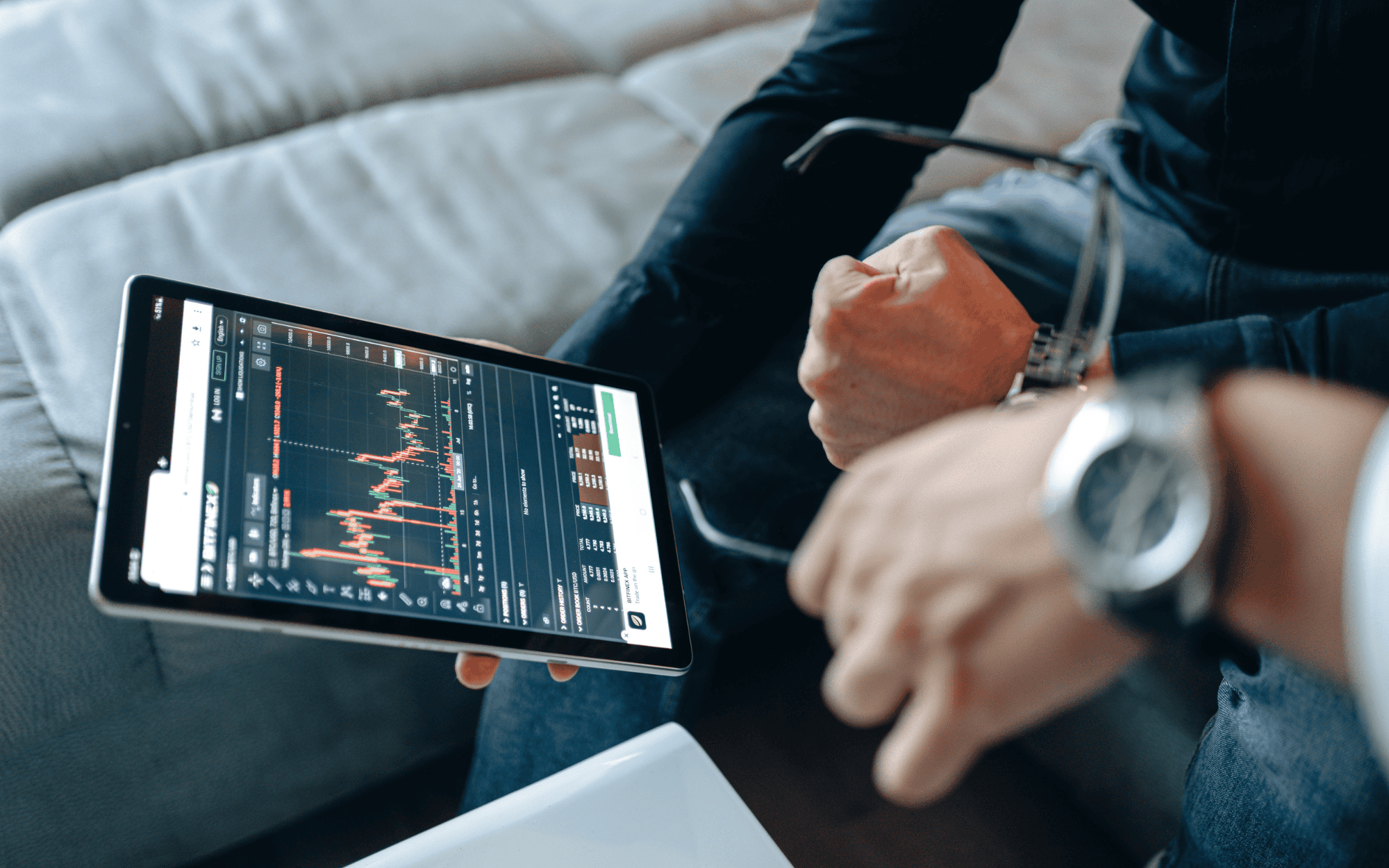The cryptocurrency market in 2025 is a dynamic arena, with a total market cap of $3 trillion and Bitcoin trading at $100,000, per CoinMarketCap. For experienced traders, the volatility that defines crypto—such as Ethereum’s 30% price swing in a single week in 2024—presents both opportunities and challenges. Advanced trading strategies can help you navigate this landscape, maximize profits, and manage risks effectively. This guide explores sophisticated techniques like arbitrage, scalping, swing trading, and more, tailored for seasoned traders looking to thrive in the 2025 crypto market.
Understanding the 2025 Crypto Market for Advanced Trading
The crypto market in 2025 is more mature than ever, with 150 million users globally and over 23,000 cryptocurrencies listed on CoinMarketCap. Institutional adoption is at an all-time high, with companies like BlackRock holding 1.2 million BTC, per Bitcoin Magazine, driving liquidity and volatility. Layer 2 solutions like Arbitrum and Optimism have reduced Ethereum gas fees by 90%, making DeFi trading more accessible, while Solana’s 5,000 transactions per second (TPS) continue to dominate high-frequency trading environments.
Market trends in 2025 also include the rise of AI-driven tokens, with projects like Fetch.ai (FET) gaining 150% year-to-date, and the growing popularity of tokenized real-world assets (RWAs), which reached a $10 billion market cap, per CoinGecko. However, risks remain—scams cost $1.8 billion in 2024, and regulatory uncertainty, such as the EU’s DAC8 tax reporting rules, adds complexity. Experienced traders must leverage advanced strategies to capitalize on opportunities while mitigating these risks, using tools like real-time data, technical analysis, and risk management to stay ahead.
Stay updated on market trends with our Best Time of Day to Trade Crypto in 2025.
Arbitrage Trading: Exploiting Price Differences Across Exchanges
Arbitrage trading involves buying a cryptocurrency on one exchange where the price is lower and selling it on another where the price is higher, profiting from the price difference. In 2025, with Bitcoin’s price at $100,000, even small discrepancies can yield significant gains. For example, BTC might trade at $99,800 on Binance but $100,200 on Kraken due to liquidity differences—a 0.4% spread that can be exploited.
To execute arbitrage effectively, use tools like CoinMarketCap or CoinGecko to monitor price disparities across exchanges. High-speed bots, such as those offered by 3Commas, can automate trades, executing orders in milliseconds to capitalize on fleeting opportunities. Focus on high-volume pairs like BTC/USDT or ETH/USDT, which have tighter spreads but frequent discrepancies—Binance alone handles $20 billion in daily volume, per CoinMarketCap.
Key considerations include trading fees (e.g., Binance’s 0.1% per trade), withdrawal fees, and transfer times, which can erode profits. In 2025, Layer 2 solutions like Polygon reduce transfer costs, making cross-exchange arbitrage more viable. However, be mindful of market risks—sudden price drops during transfers can lead to losses. Arbitrage is low-risk compared to speculative trading but requires precision and speed, making it ideal for experienced traders with the right tools.
Learn more about arbitrage with Investopedia’s Guide to Crypto Arbitrage.
Scalping: High-Frequency Trading for Small, Consistent Gains
Scalping is a high-frequency trading strategy that involves making dozens or hundreds of trades daily to capture small price movements, typically 0.1% to 0.5% per trade. In 2025, with Solana’s low fees (under $0.01 per transaction) and high TPS, scalping is particularly effective on pairs like SOL/USDT, which sees $5 billion in daily volume, per CoinGecko.
To scalp effectively, use technical indicators like the Relative Strength Index (RSI) and Bollinger Bands to identify overbought or oversold conditions. For example, if ETH’s RSI drops below 30 on a 1-minute chart, it may signal a buying opportunity, allowing you to sell at a 0.3% gain minutes later. Trading bots like HaasOnline can automate scalping, executing trades based on predefined parameters, such as buying at a 0.2% dip and selling at a 0.4% rise.
Scalping requires a disciplined approach—set strict stop-losses (e.g., 0.5% below entry) to limit losses, as rapid price movements can turn against you. Focus on high-liquidity exchanges like Binance or Bybit, which offer low fees (0.02% on Bybit for futures) and fast execution. In 2025, scalping can yield 5–10% daily returns if executed well, but it demands constant monitoring and emotional control, making it suited for experienced traders comfortable with high-frequency trading.
Enhance your technical skills with our How to Read Crypto Charts for Beginners.
Swing Trading: Capturing Medium-Term Price Movements
Swing trading involves holding positions for days or weeks to capture larger price movements, typically 5–20%. In 2025, with altcoins like Avalanche (AVAX) and Polkadot (DOT) showing 50% monthly gains during bull runs, swing trading offers significant profit potential. For example, AVAX might rise from $50 to $60 over two weeks, yielding a 20% return.
Use technical analysis to identify entry and exit points. The 50-day and 200-day moving averages (MA) are reliable indicators—if the 50-day MA crosses above the 200-day MA (a “golden cross”), it signals a bullish trend, as seen with ETH in January 2025, per TradingView. Combine this with support and resistance levels—buy near support (e.g., $3,000 for ETH) and sell near resistance (e.g., $3,500). The MACD indicator can also confirm momentum shifts, helping you time your trades.
Risk management is crucial in swing trading. Use a 1:3 risk-to-reward ratio—risk $100 to gain $300—and set stop-losses below key support levels (e.g., 5% below entry). Leverage can amplify gains but also losses; on Bybit, 10x leverage on a $1,000 position controls $10,000, but a 10% drop wipes out your capital. In 2025, swing trading suits traders who can analyze trends and remain patient, offering higher returns than day trading with less time commitment.
Explore more strategies with our How to Trade During Crypto Market Dips.
Futures and Options Trading: Leveraging Market Movements
Futures and options trading allow you to speculate on crypto price movements without owning the underlying asset, using leverage to amplify gains. In 2025, exchanges like Bybit and Binance dominate futures trading, with $50 billion in daily derivatives volume, per CoinMarketCap. For example, a BTC perpetual futures contract on Bybit lets you bet on Bitcoin’s price with up to 100x leverage.
In futures trading, going long (buying) profits from price increases, while going short (selling) profits from declines. If BTC is at $100,000 and you expect a 5% rise, a 10x leveraged long position on a $1,000 margin controls $10,000—yielding $500 profit on a $5,000 price increase. However, a 5% drop wipes out your margin, so use stop-losses (e.g., 3% below entry) to manage risk.
Options trading offers more flexibility. A call option on ETH at a $3,500 strike price lets you buy ETH at that price by expiration. If ETH rises to $4,000, you profit $500 per contract, minus the premium. Options are less risky than futures, as your loss is limited to the premium paid—ideal for hedging in 2025’s volatile market. Deribit, with 85% of the crypto options market share, is a top platform for options trading.
Both strategies require deep market knowledge and risk management, as leverage can lead to significant losses. In 2025, futures and options trading suit experienced traders comfortable with high-risk, high-reward scenarios.
Learn more about futures trading with Binance Academy.
Risk Management and Tools for Advanced Crypto Trading
Advanced trading strategies amplify both profits and risks, making risk management essential in 2025. Here are key practices and tools to ensure success.
- Position Sizing: Never risk more than 1–2% of your capital per trade. For a $50,000 portfolio, limit risk to $500–$1,000 per trade, ensuring a single loss doesn’t derail your strategy.
- Stop-Losses and Take-Profits: Always set stop-losses to cap losses (e.g., 5% below entry) and take-profits to lock in gains (e.g., 15% above entry). Tools like TradingView let you set alerts for these levels.
- Diversify Strategies: Don’t rely on one strategy—combine arbitrage, scalping, and swing trading to balance risk. For example, use arbitrage for steady gains and swing trading for larger moves.
- Trading Bots: Bots like 3Commas and HaasOnline automate strategies, executing trades 24/7. They’re ideal for scalping and arbitrage, with 3Commas offering pre-built bots starting at $14.50/month.
- Portfolio Trackers: Use CoinStats or Delta to monitor your trades and performance. CoinStats’ advanced analytics ($7.49/month) help you track profit/loss across strategies, ensuring you stay on top of your portfolio.
In 2025, with regulatory scrutiny increasing—such as the EU’s DAC8 rules—ensure your trades comply with tax reporting requirements. Advanced traders who master risk management can thrive in the volatile crypto market.
Simplify tax reporting with our Top Crypto Tax Reporting Tools in 2025.
Mastering Advanced Trading in the 2025 Crypto Market
The crypto market in 2025 offers immense opportunities for experienced traders, with a $3 trillion market cap and trends like AI tokens and RWAs driving growth. Advanced strategies like arbitrage, scalping, swing trading, and futures/options trading can help you capitalize on volatility, but they require skill, discipline, and robust risk management. Use tools like TradingView for analysis, 3Commas for automation, and CoinStats for tracking to stay ahead. By combining these strategies with a deep understanding of market dynamics, you can navigate the complexities of 2025 and achieve consistent profits in the crypto space.
Stay informed with CoinDesk’s Market Insights.












